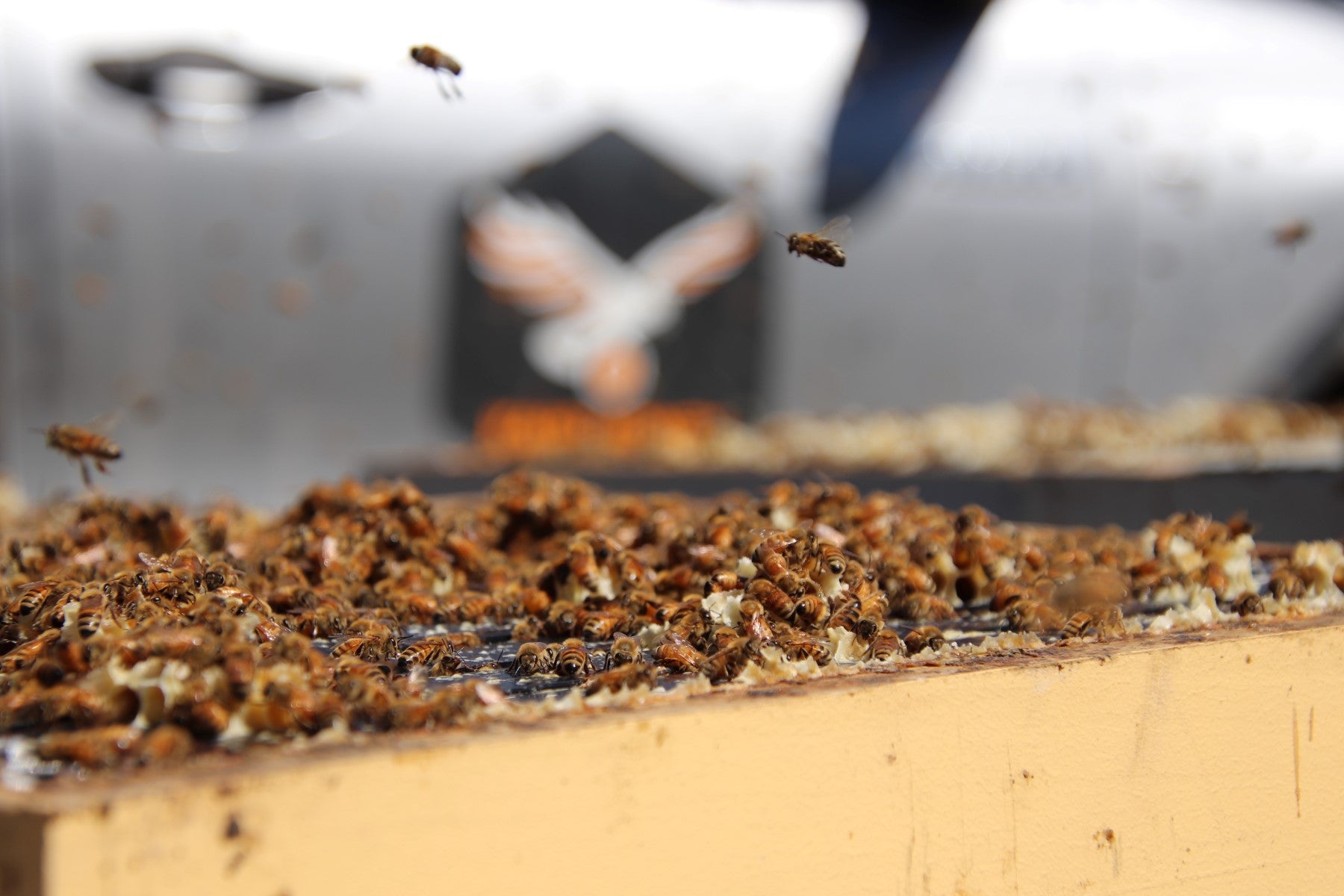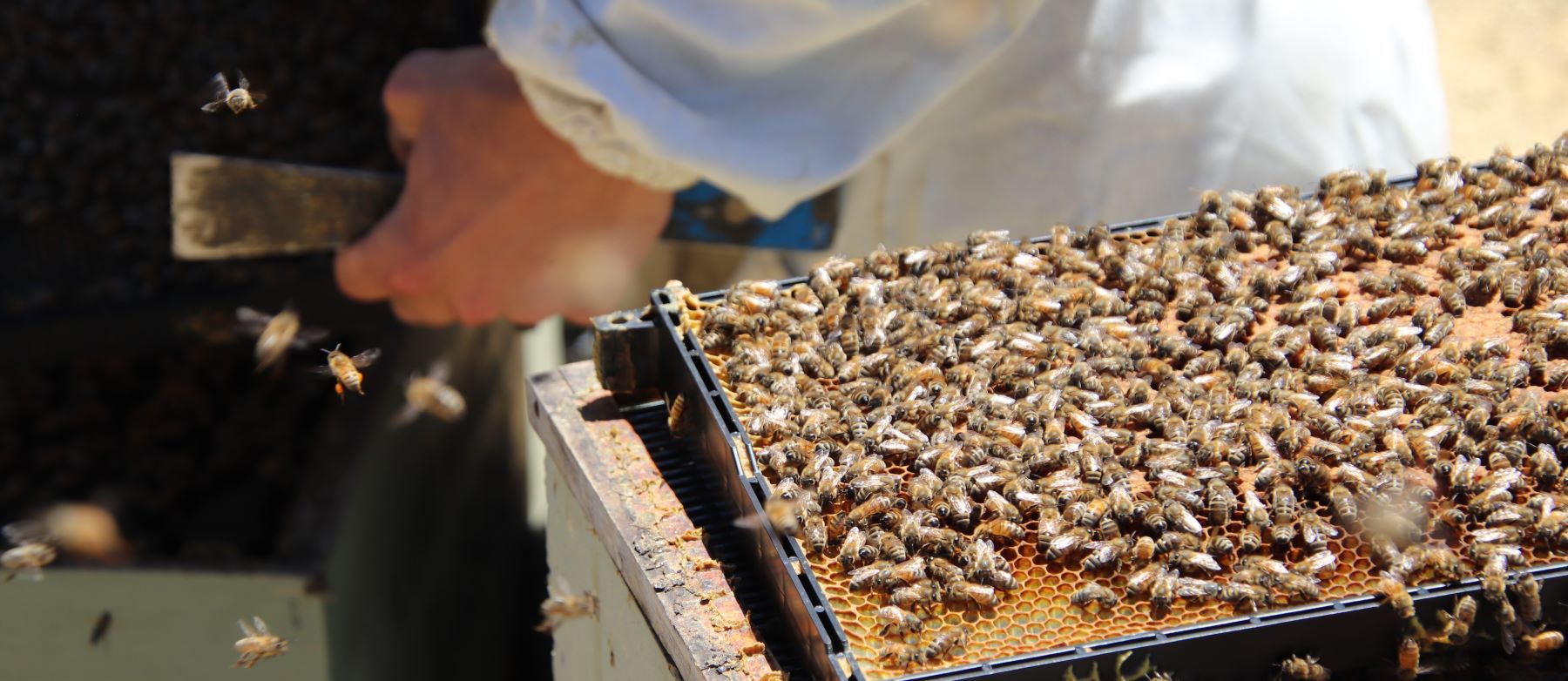
Nectar of The Gods
The Story of Mānuka Honey
Some cultures view bees as messengers of the Gods. Their honey has also been compared to the nectar of the Gods, thus elevating bees to the status of royalty.
Today, Mānuka Honey isn’t just being sold as honey but instead, is being sold as a nutraceutical – a food that is also a medicine. Mānuka honey with high levels of non-peroxide antibacterial activity can be more effective than honey that only produces hydrogen peroxide since mānuka’s special activity is heat-stable and is not adversely affected by catalase.
“Let food be thy medicine and medicine be thy food” – Hippocrates
Māori, the indigenous people of New Zealand, have used and known about the healing properties of the Mānuka tree for hundreds of years. After 20 years of research, Peter Molan from Waikato University in NZ identified the honey’s non-peroxide activity. This was named and trademarked the Unique Mānuka Factor or UMF. The UMF ratings are very straightforward and reference back to the concentration of phenol (i.e UMF 5+ was equivalent to 5% phenol, UMF 10+ equivalent to 10% phenol, and UMF 20+ equivalent to 20%), as measured in the lab with honey inhibiting the growth of S. Aureus bacteria and then comparing the “ring of inhibition” with phenol. This research led to the identification of the magic ingredient which gives Mānuka honey its antibacterial activity. It was identified in 2008 by scientists in Germany.
METHYLGLYOXAL
This magic ingredient was Methylglyoxal (MGO) and was shown to be causing bacterial inhibition similar to Mānuka honey samples themselves. In Mānuka nectar the levels of MGO are low but a molecule called dihydroxyacetone (DHA) is high. As Mānuka honey ages the DHA level decreases and the MGO level increases. This is due to the glucose oxidase enzyme the bees add to the nectar, which produces acidity in the honey. The conversion of DHA to MGO is the basis of lab tests which predict the potency of a batch of Mānuka honey. The higher the DHA level in the nectar, the higher the MGO level in the honey as it ages. This is important because other floral honey’s peroxide activity decreases with age. Methylglyoxal MGO content and UMF both measure the same non-peroxide activity of a Mānuka honey sample.
This story of Mānuka is based on the work of Cliff Van Eaton in his book “Manuka: The biography of an Extraordinary Honey”
Mānuka Honey Properties
Antibacterial
Mānuka honey is very effective against bacteria because it is a system. It has the ability to interfere with bacteria at the most basic level, how it regulates itself. Mānuka honey has been shown to stop the attachment of biofilms produced by bacteria to protect themselves from other competing bacteria and from human-applied antibiotics.
It protects against multi-species biofilms in the mouth (plaque and tooth decay). It can be used to treat established infections in wounds and burns by eradicating biofilms. It is useful in inhibiting diabetic leg ulcers and bedsores. MRSA (methicillin-resistant S. aureus) a “superbug “ is being effectively inhibited by Mānuka honey and in fact, many species of bacteria are being controlled using Mānuka honey because it has many different modes of action which can be utilised for successful inhibition of a particular species.
In 2007 Derma Sciences Medi-Honey line of Mānuka honey and alginate dressings were cleared for sales and marketing by the FDA in the United States, the most stringent regulator of medical products worldwide.
Anti-Inflammatory
Mānuka honey plays a significant role in alleviating the pain of stomach ulcers. H. Pylori growth is inhibited by the non-peroxide activity. It stimulates an immune response. Inflammation is an important process in the healing of wounds and burns but it can increase pain. Mānuka honey reduces swelling and speeds up the healing process.
Anti-Fungal
Mānuka honey inhibits the growth of skin fungi that cause TINEA e.g ringworm, athlete’s foot and fungal toenail.
Anti-Oxidant
Relative to other foods Mānuka honey has high anti-oxidant properties.
High-activity Mānuka honey is now accepted as being beneficial for general digestive and gut health in most people with the exception of infants under 12 months of age. (Monofloral Mānuka NZ Limited suggests 1 tbsp/day). Mānuka honey is now being used in veterinary care as well.

Why you should use Mānuka Honey
We call it the “superstar” of honey. It comes from the nectar of the flowers of a wild and spontaneous New Zealand shrub, the Leptospermum scoparium. Already in the time of the Māori, it was used as food and medicine for wounds, ulcers and burns. Mānuka honey has high antibacterial properties, called methylglyoxal (MGO). This honey also has higher antioxidants and anti-inflammatory properties than regular honey.
Mānuka honey can be used as a soothing wound healing on the skin or for acne, as a fungicide against candida, and to relieve some gastrointestinal disorders. It is rich in nutritional value: containing vitamin B, vitamin C, and minerals like calcium, iron, zinc, potassium, and magnesium. Mānuka honey also contains a large number of phenolic compounds: flavonoids and phenolic acids, also known as polyphenols.
Common uses for Mānuka honey are wide and varied.
Immunity Uses for Mānuka Honey
Soothe your sore throat, tonsillitis and cough
Honey, lemon and ginger are age-old remedies for sore throats. But mānuka honey might be just as effective at clearing coughs as some over-the-counter medicine. Swallowing 1-2 teaspoons of manuka honey a day when you have a sore throat may help soothe you. Mānuka honey can help soothe your tonsillitis as well. Its anti-inflammatory properties work wonders in reducing redness, pain, and swelling in your throat.
Fight periodontal disease and gingivitis
It might surprise you that Mānuka honey is good for your teeth and gums, given the high sugar content in honey. But the high antibacterial activity in Mānuka honey is actually effective at inhibiting the growth of harmful bacteria, like P. gingivitis. It has been found to reduce bleeding in patients suffering from gum disease.
Treat impetigo
“Impetigo is a common acute superficial bacterial skin infection characterised by pustules and honey-coloured crusted erosions (‘school sores’).”- Derm Net NZ
Mānuka honey might be able to help with impetigo. It’s advised to apply a high-grade Mānuka honey directly to impetigo sores. Leave it on for 20 minutes before washing it off.
Treat cystic fibrosis
People with cystic fibrosis commonly contract upper respiratory infections. Mānuka honey has been shown to fight the bacteria that cause these, by inhibiting their growth. It’s also been shown to work in conjunction with antibiotic treatment.
Aid digestion and gut health
Mānuka Honey (raw) contains enzymes that enhance the digestion of foods, particularly carbohydrates.
Honey is a natural prebiotic and the consumption of honey may help gut health by increasing bifidobacteria populations.
Anecdotal evidence suggests honey may be beneficial for the treatment of gastric ulcers and other gastrointestinal inflammatory conditions.
Wound care
Mānuka honey has antibacterial properties and a unique pH balance that promotes oxygen and healing compounds to a wound. It is also antifungal and anti-inflammatory. Only medical-grade honey, such as honey produced by Monofloral Mānuka, should be used on wounds. See tips for applying honey on wounds on Healthline’s website.

